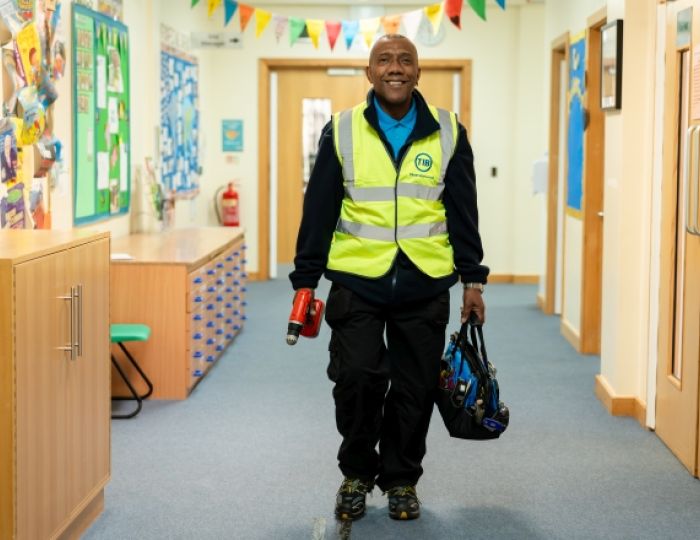Schools are positive places.
In fact, many in the teaching profession have ‘positive problem solver’ imprinted in their DNA long before the print on their PGCE certificate has dried.
Take the approach to physical health in schools.
As concerns about obesity levels have risen in this country, so too have the number of schools offering constructive ways to address the issue.
Healthy cooking sessions, hip hop at lunch times and active lessons – where a teacher might teach the times tables while pupils jump over beanbags – have all been introduced to ensure fewer children suffer the consequences of a poor diet or lack of exercise.
However, when it comes to mental health our approach is often very different. It may be a lack of training or feeling out of our depth when talking about our emotions, but more often than not, concerns are only addressed when a child or member of staff is already suffering considerably.
Prevent and protect
Much like we know a trip to the gym, or an early morning run a couple of times a week, will keep our bodies functioning more effectively, we have to take the time to do the same for our emotional health and that of our staff and pupils.
A recent NASUWT survey revealed over 80% of teachers reported an increase in stress during the pandemic, and Young Minds that one in six children have been diagnosed with a mental health condition.
But as a senior leader, where can you start to take a more proactive approach to mental wellbeing in school?
Here are a few strategies:
1. Know where you’re starting from
Before you even begin trying to implement a positive mental health programme in your school, you have to know exactly where you’re starting from.
Public Health England (PHE) and the Department for Education’s eight principles outlined in their Promoting Children and Young People’s Mental Health and Wellbeing guidance (tinyurl.com/CYPMHealth), highlight the key areas to concentrate on to create a positive mental health culture.
The principles prompt you to examine whether your curriculum promotes resilience and supports social and emotional learning, whether the student voice is represented, and whether the interventions you already have in place are delivering on expected outcomes.
This approach helped us reexamine the way we supported children who were falling behind in class. Previously, we would assign the child an intervention teacher who would teach them one-to-one outside of the classroom.
But on reflection, we felt that if we looked at the issue from the angle of the overall outcomes for the child, they would feel more comfortable with a teacher who knows them well. They would also be more engaged, less isolated and ultimately happier if they could stay with their peers.
This made us rethink our interventions and now we provide more support to the class teacher so the interventions can take place in class.
2. Appoint a mental health lead
Children’s mental health is something that is only really touched on in teacher training.
Bundle that with the fact that, as a nation, we have only recently started talking about mental health and it is fairly obvious that we could all do with brushing up on the skills required to knit positive wellbeing into the fabric of a school.
Appointing a mental health lead and providing them with adequate training is the turning point for many schools.
A member of our team signed up to train with the Carnegie Centre of Excellent for Mental Health in Schools, from Leeds Beckett University’s Carnegie School of Education.
The government has earmarked funding to increase the number of such mental health leads in schools so take advantage of the grants coming online to upskill your team.
The mental health leads won’t replace the work of CAMHS, but they ensure that mental health becomes part of discussions around curriculum or home learning, or many of the other more general issues we have to deal with as a school.
This allows us to work together to spot crunch points so we might agree to deploy teaching assistants differently when a particular year group is managing SATs to take the pressure off teachers or help pupils.
3. Adopt an anti-bias stance
Have you made the mistake of assuming a young teacher doesn’t know about old curriculums or isn’t confident with behaviour management because they’ve been in the job for less time than you? That’s bias.
When supporting the mental health of staff and students, it’s important to adopt an anti-biased approach. You have to see everybody as an equally valued individual and avoid making assumptions of others.
Question your internal, unacknowledged bias as a leader and recognise that it could get in the way of a positive day for mental health. You have to swallow your pride a bit and be aware of how even the briefest of chats can change someone’s day for the worse or better.
4. Don’t be afraid to do things differently
Excessive assessments can make teachers and pupils feel like a cog in the machine so do not be afraid to do things differently and take a preventative approach to mental health.
One of the changes we made at Kensington Primary was to create a new curriculum as we didn’t feel the existing one prepared children for the challenges of modern life.
Instead, we put emotional health at the heart of the curriculum from nursery to Year 6 with lessons on everything from friendships to cyber bullying. Improving our mental health has become something we work on every day, just like exercise or eating well.
To be able to change the way mental health is viewed we need to acknowledge that struggle is normal and not a bad thing. With an ethos of support, people are more able to talk openly about what they find hard, so we can support them before it escalates.
Spot the red flags
Giving individuals the space to get to know each other is essential to establish a safe, trusting space where wellbeing can be talked about openly and where we can spot when someone needs help.
Whether it’s noticing the literacy lead has stopped finding the time to go to their beloved weekly theatre group or the EYFS lead has started biting their nails.
This applies to both teachers and pupils.
Teachers often come back from a school trip and say something like, “I had a really good chat with Hema or Zach on the train and I wish I’d had that chat back in September as now I understand them better and it explains some of their behavior in class.”
It is important to try to create more opportunities for this type of engagement in school. We’ve achieved this by not doing book scrutinies, lesson observations, or having a rigid curriculum that staff have to push through at the expense of really knowing those around them.
This nips many stressors in the bud before they happen, both in teachers and pupils. We always say it’s not about test results, it’s about knowing the students.
Ben Levinson OBE is headteacher at Kensington Primary School










